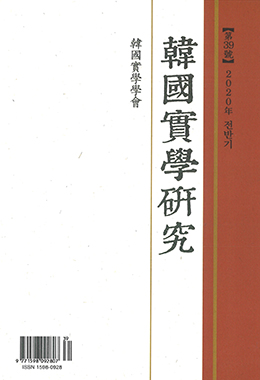한국의 명승지에는 바위에 이름을 새겨둔 유적이 많다. 그것을 유적이라고 부르는 데 동의하지 못할 사람이 많을 것이다. 우리는 ‘자연보호’라는 구호가 뇌리에 박혀 있다. 그래서 바위에 새겨진 이름에 대해서는 부정적이다. 한데, 현재가 아니라 과거, 200년 이상 지난 과거에 새겨진 이름이라면 어떨까? 아무런 의미도 없는 것일까? 그런 풍조는 언제부터 유행을 하였을까?
필자는 언젠가부터, 바위에 새겨진 그런 이름들을 대수롭지 않게 여기고 지날일은 아니라는 생각이 들었다. 결론이지만, 지금 우리가 볼 수 있는 몇 곳 유적의 바위에 새겨진 이름은 대개 18세기의 유물이다. 본고는 단양 사인암 유적만 대상으로 하였다. 이윤영을 중심으로 한 18세기 중반 노론 지식인들의 이름이 대부분을 차지하고 있다. 바위에다 나란히 이름을 함께 새기자면, 오랜 기간에 걸쳐 여러 가지 활동이 먼저 있었을 것이다. 그런 사연을 더 깊이 들여다보기는 앞으로의 과제로 남겼다.
Many of Korea's scenic attractions have their names engraved on rocks. Many would disagree with calling it a relic. We have the slogan ‘Nature Protection’ in our minds. So the name engraved on the rock is negative. But what if the name was engraved in the past, more than 200 years ago, not the present? Does it mean nothing? Since when did such a trend become fashionable?
I often see names engraved on rocks. From one day on, it occurred to me that it was not something to be trifled with. In conclusion, the names carved on the rocks of some of the ruins we see now are usually relics of the 18th century. The original only targeted the remains of Sainam in Danyang Sainam ruins. The names of the Noron intellectuals in the mid-18th century, led by Yi Yun-yeong, are mostly made up. If you were to engrave your name together, there would have been a number of activities over a long period of time before that. It is a task to read more data from now on. Starting from Sainam Rock, we will also look into several other sites.


